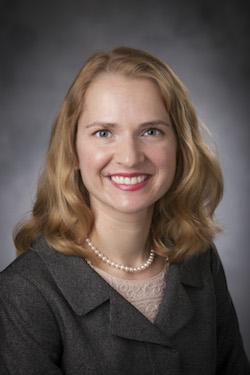
“The work goes on…
the cause endures…
the hope still lives, and
the dream shall never die”
- Senator Ted Kennedy
I was very grateful for the opportunity to attend and represent Duke Medical School at the inaugural “Pathways to Physician Diversity: A National Summit” held at the Mayo Clinic in Phoenix, Arizona on February 9 and 10, 2018. This was an extremely educational and inspiring event attended by participants from medical schools and universities across the United States, with the goal of exploring strategies to increase the pipeline and access to medical careers to individuals from diverse backgrounds. Outstanding speakers included Drs. Richard H. Carmona, the 17th Surgeon General of the United States (who received a standing ovation), David A. Acosta, the Chief Diversity of Inclusion Officer of the Association of American Medical Colleges, Cedric Bright, Associate Dean for Inclusive Excellence at UNC and prior president of the NMA, among many others. The content of the summit was very rich, but I would like to highlight a few important topics discussed.
The current state of affairs in diversity in medical education is surprisingly bleak, as the acceptance of African American and Hispanic applicants did not change since 1980 despite funding programs to increase diversity, and in fact it decreased for males from these ethnic groups. There is also an existing crisis of American Indian or Alaska Native men. The “leaky pipeline” to success of these ethnic groups is due to economic and societal difficulties, standardized test scores as a major barrier to acceptance, “a hidden curriculum”, numerous socioeconomic challenges at every step, and the presence of microaggressions throughout the course of their education and career. In turn, a lack of inclusion is very detrimental to any institution, as it leads to an incomplete organization, one that does not benefit from advantages of diverse individuals that would enrich it. As former US Surgeon General Regina Benjamin noted, “unless the current trend is reversed, our country will see a growing ethnic and racial disconnect between those who receive care and those who provide the care.” To counteract the current state, there is a need for very early mentorship and sponsors of underrepresented minority (URM) students through National Medical Association and Student National Medical association programs.
A number of strategies to allow closing the gaps were outlined by a number of speakers, via case presentations or description of current focused programs. Medical student admission committees are starting to consider a more holistic application review, one that goes beyond standardized test scores (the “looking beyond numbers” concept), while considering the true value of diversity. Along with this, there is a need for data-driven education of all members of organization on the benefits of diversity and for changes in the institutional metrics of success. Very early mentorship of URM students in STEM careers and sponsorship by their mentors are critical, as is identifying the right fit between student or trainee and a program/institution. Lastly, after acceptance to an institution or program, it is also important to ensure that URM students have a peer group and a community in order to foster a sense of belonging and their future success.
In the words of Mathatma Gandi, “our ability to reach unity in diversity will be the beauty and the test of our civilization.” More than ever, this applies to the medical field, which needs to see increased access to medical careers of individuals from diverse backgrounds. Together, through broad initiatives such as the national summit “Pathways to Physician Diversity”, we can succeed.